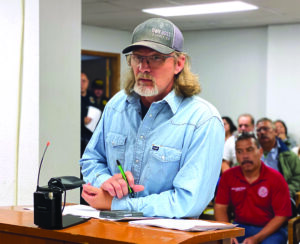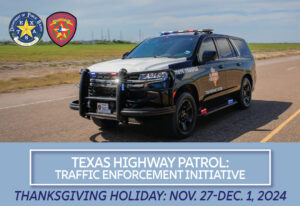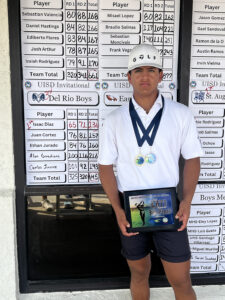By Senior Amn. Anne McCready
Laughlin AFB, Texas
LAUGHLIN AIR FORCE BASE, Texas–During one ordinary shift, two Laughlin Airmen stumbled upon a frightening situation they had to apply the life-saving skills they’d rehearsed each year.
It was around 2 a.m., June 26, 2020 and Senior Airman Christopher Beckett and Senior Airman Logan Sando, 47th Operations Support Squadron radar airfield and weather systems (RAWS) technicians, were on duty. The two began their dead-of-night shift like all the rest: with a cup of coffee and a mission to accomplish.
The night’s task was to make the drive to take care of the Next-Generation Weather Radar maintenance. The NEXRAD is a weather radar between Laughlin Air Force Base, Texas, and Uvalde. Their task would be performing some preventative maintenance on it. It was essential to go in the middle of the night because it would be nearly impossible to maintain it during the day when Laughlin’s air traffic control and the National Weather Service need it the most.
With a plan for their morning’s work, they set out driving down Highway 90, alert and ready to work. The morning was dark, clear and warm.
Suddenly, Beckett slammed on the brakes and shouted, “whoa!” Sando was certain they were about to hit a deer as he looked up from his phone in a jolt.
That wasn’t it. As Beckett turned the truck around, Sando saw an SUV with emergency lights pulsing on the side of the road they had passed. Someone had wrecked.
Pulling up, Beckett saw the outline of the SUV in the beams of their government vehicle’s headlights. The two Airmen jumped out of the truck. Walking around the wrecked vehicle, they saw a disheveled and disoriented man appear out of the pitch black holding a toddler in his arms. He was out of it, recalled Beckett, like a boxer just getting up after being knocked down.
The man was on the phone with 911, but he was in shock and couldn’t form a sentence.
Beckett took the phone and said, “There’s been an accident on Highway 90 about fifteen minutes out from town.”
As Beckett talked, he and Sando noticed four others lying on the ground: a woman they assumed to be the mother, and three children. They were bleeding.
‘Holy…,’ thought Beckett as he realized the extent of their injuries.
“I’m going to have to begin life-saving measures on them,” Beckett said into the phone.
Thankfully they were all alive despite some gruesome injuries. They knew they had to quickly assess the level of each injury so they could address the worst first.
One child’s forehead was split completely open to the bone, and he was losing blood. Beckett tore off his uniform jacket and sand tee, and he placed the
T-shirt on the wound like gauze.
“Come hold pressure on this,” he said to the man.
They realized another young boy had a laceration on the back of his head. Scared, the little boy began screaming. Sando immediately removed his uniform jacket and sand tee and set it on this child’s wound as Beckett had done for the first child.
Beckett then asked the little girl in her father’s arms if she was hurt. He felt the sticky toddler tangles in her hair for possible head wounds.
She was too young to understand what was happening. She did the only logical thing she knew to do and squirmed away.
“It was hard because four of them were kids,” Beckett said. “And I was trying to have a conversation with a three-year-old girl, watching her brother just bleeding. She didn’t want to talk so I had no idea what condition she was in.”
Beckett told her she was beautiful and brave and that everything would be okay and kept repeating it to her to calm her. There appeared to be a little blood but it was still hard to tell.
He ran back to the work truck and grabbed some tech wipes that they use for cleaning sensitive equipment and applied pressure on her head using the wipes.
As they worked they began speaking to the oldest, a boy around 10-years-old, who complained his arm was broken. There wasn’t anything they could do about his broken arm so Beckett told him to hold pressure on his younger sister’s head with his good arm.
Beckett then knelt in the dry, prickly Texas grass next to the mother. Her face showed she was in a lot of pain, but Beckett couldn’t see any bleeding or bruises. His mind instantly traveled to the possibility of internal bleeding or concussion.
With the children’s bleeding under control, they took their uniform jackets and formed a pillow for the mother out of them, treating her for shock.
Sando wrapped his uniform fleece around the toddler. She was shivering–likely from shock as the evening was 80 degrees and dry.
With all the visible injuries treated, Beckett and Sando monitored the family until the police and emergency medical services arrived.
Afterward, Sando wasn’t completely sure of what just happened. It was just a strange moment and he wondered if they’d imagined the whole thing.
“All I felt during our response was adrenaline,” Sando said. “Other than that I wasn’t feeling much; I just reacted, thinking of my training and doing my best to keep them alive until the ambulance could arrive.”
Sando encourages everyone to take first aid very seriously.
“I didn’t think I would ever have to use it, and yet there I was in a very real situation where it was vital I remembered my training,” Sando said. “This was no small situation–there were possibly lives on the line. Don’t take self-aid buddy-care for granted: you could need it at any time.”
Beckett is working to equip each of the RAWS work trucks with first aid kits in case something like this happens again.
“I’m thankful for the classes and also the Air Force,” Beckett said. “Sando and I were calm, collected, and straight to the point. We never froze, we never freaked out. We took charge of the situation and instructed the family on what we needed to do. I felt we were truly a well-oiled machine; even though we’d never had any real life experience. Doing something neither of us have done before.”
Just about everyone in the Air Force–both officer and enlisted–have clicked through the Self-Aid Buddy-Care online course as well as sat through the many slides taught in-person to remain certified. For most, the process of staying certified on SABC can become a tedious checklist, and it’s tempting to rush through; however, Beckett and Sando’s story illustrates that while this knowledge is necessary for combat, these skills are critical just as often, whether on duty or off.




